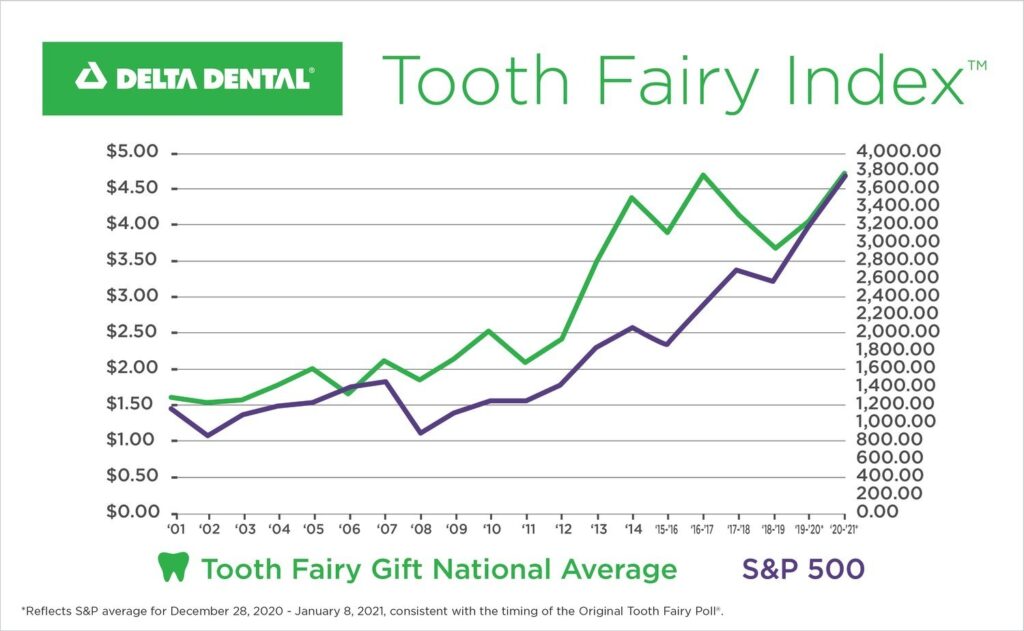Did you know that one of the National Tooth Fairy Days just passed on August 22nd? Yeah, there’s actually TWO National Tooth Fairy Days. The other one is on February 28th. No one knows for sure, but it’s believed that the reason for a double dose of the fairy-themed day has something to do with American Dental Association’s recommendation of two cleanings annually.
WHAT IS THE TOOTH FAIRY?
Many of you have grown up with fond memories of losing teeth because of the Tooth Fairy. If you’re unaware of the Tooth Fairy, she or he will visit you in your sleep whenever you lose a baby tooth. As long as you leave the tooth underneath your pillow the tooth fairy will take the tooth, leaving a prize  (usually money) in its place! I mean, that sounds pretty awesome. What kid doesn’t like receiving a gift or money for something as simple as putting a lost tooth under their pillow?
(usually money) in its place! I mean, that sounds pretty awesome. What kid doesn’t like receiving a gift or money for something as simple as putting a lost tooth under their pillow?
In the 1920’s fairies were commonly used for different types of health education. These fairies were created to get kids to do things like eat their vegetables, wash behind their ears and get a good night’s rest. In 1927, Esther Watkins Arnold wrote a play about the Tooth Fairy. Schools began to perform the play the following year and kids have been getting visits from the Tooth Fairy ever since.
A WAY TO INSTILL GOOD ORAL HEALTH HABITS IN CHILDREN
“One in three parents agreed that Tooth Fairy visits are a positive way to instill good oral health habits in their children,” according to a survey conducted by Delta Dental.
About half say that the Tooth Fairy visits are exciting, special and fun for their kids. Emily O’Brien, Director of Strategic Communications for Delta Dental Plans Association, says “The Tooth Fairy tradition invites oral health conversations into households in an exciting and fun way…”
THE RISING COST OF BABY TEETH
The Original Tooth Fairy Poll conducted by Delta Dental has tracked how much the tiny fairy is willing to shell out for a child’s lost baby tooth. The average cost of a tooth was around $1.50 in 2001. The cost in 2021 seems to average around $4.70! That’s more than a 300% increase in 20 years. At this rate, our kids (I mean, the tiny, magical tooth fairy) will be paying around 15 bucks for a single tooth in 2040. Is this Tooth Fairy inflation? Well, not exactly.

The Tooth Fairy pricing poll has typically tracked with the economy’s overall direction and closely matched the trend of Standard & Poor’s 500 (S&P 500) index. So in 2040 your children (The Tooth Fairies of their time) might be paying around $15 for each of their kid’s teeth, but they’ll likely be paying a lot more most other things as well.
Follow ABS on FaceBook and Twitter. Please contact us directly if you’d like to learn more about Evolution dental lab management software.






 Customer Login
Customer Login